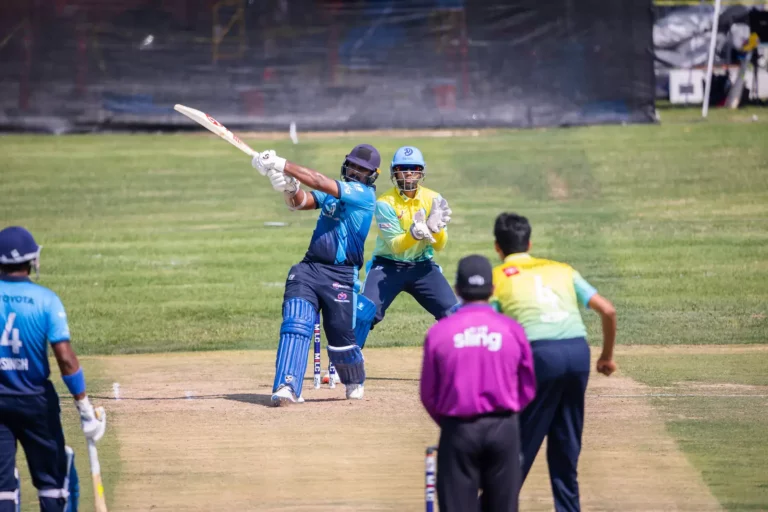Cricket Rules and Regulations
Cricket is one of the most thrilling games being played in and by 108 countries worldwide. Twenty-one African teams, 17 Americas teams, 25 Asian countries, 11 East-Asia Pacific countries, and 35 European nations, make this one of the most popular team sports. All Cricket Rules and Regulations are made by higher authorities.
The International Cricket Council, which has members from over one hundred nations and territories but only twelve of which now play Test cricket, oversees cricket on a global scale. The “Laws of Cricket” specify the regulations of the game. It has multiple formats like Test cricket, ODI, and T20.
Official Cricket Rules and Regulations

Following are some of the official cricket rules” Two teams of eleven players each compete in the sport of cricket.
- A “Twelfth man” is a backup player utilized in the event of a player injury during play
- The twelfth player is not permitted to bowl, bat, guard the wicket, or serve as the team captain
- When the original player has fully healed from their injury, they can rejoin the game
Two umpires are present throughout matches to enforce the law and guarantee that the cricket rules are adhered to throughout the game. The onus of making choices and informing the scorers of those decisions rests on the umpire.
On the playing field, there are two umpires in attendance, and a third umpire off the field oversees video decisions. When a call is close, the on-field umpires refer it to the third umpire, who uses slow-motion video replays to reach a determination.
The various methods cricket’s regulations can dismiss a batter are as follows:
According to cricket rules, a batsman is out if the Ball is bowled and strikes their wickets while on strike.
Cricket Rules and Regulations: Caught
According to cricket rules, a batter can be out after making contact with the Ball with his bat, hand, or glove while holding it.
Cricket Rules and Regulations: Stumped
By cricket rules, a batter may be declared out if the wicketkeeper places his wicket down outside his crease and does not attempt a run.
If you play cricket, you must know all the rules and regulations. According to cricket regulations, a batsman is considered to be “run out” if no part of his body or bat is grounded behind the popping crease while the Ball is in play and the fielding side pretty takes the wicket.
Cricket Rules and Regulations: Timed Out
Three minutes after the outgoing batsman is dismissed, the incoming batsman must be prepared to face a ball or be at the non-end strikers with his partner.
Cricket Rules and Regulations: Hitting the Ball Twice Or more than once
According to cricket rules, if a batter hits the Ball twice without the opposition’s permission or to protect his wicket, he is out.
Cricket Rules and Regulations: Basic Rules Of Cricket
Following are some of the basic fielding, bowling, and batting rules:
Cricket Rules and Regulations: Fielding Restrictions
Each type of cricket has its own set of fielding regulations. To provide a fair game for both teams and avoid evil tactics or approaches.
The bowling squad consists of a bowler, a wicketkeeper, and nine fielders dispersed throughout the field in various locations depending on the passing overs.
Only two fielders are positioned between the square leg and long stop, where no fielder should be present until the batter plays the Ball, according to the fielding positions.
Cricket Rules and Regulations: Penalty Balls
In cricket, there are three kinds of penalty balls that are as follows:
No Ball
When the bowler crosses the wicket with their front foot while throwing a ball or if the bowler’s rear foot lands outside the crease, one run is credited to the batting team. No ball counts if it is well over the striker’s waist and misses the pitch.
Also, After a no-ball, the batsman receives “a free hit” in which another ball is delivered; at this time, the batsman can only be dismissed by runout or stumping.
Dead Ball
When the Ball bounces more than once before getting to the batsman’s crease, it is a dead ball.
Wide Ball
It’s a rule of cricket for wide Balls that a run is given to the batting team for wide balls. A bye can be scored in cricket from either a no-ball or a valid delivery.
Bye and Leg Bye in Cricket
The batsman can run and score if the Ball is not struck by the bat or touches any part of his body. The team receives a four when such a ball is served and crosses the boundary. Additionally, the byes are recorded independently of the batsman’s score.
In cricket, a leg bye occurs when a ball is served and strikes any part of the batsman’s body to indicate his intent to play the Ball, allowing him to run and score. The batting team scores a four if such a ball touches the boundary.
Cricket Rules and Regulations: Essential Cricket Skills And Activities
If your child has a foundational level of ability and comprehension of the game when they begin playing sports, they will always love it better. They will surely be able to join, encouraging them to play and stay active. As sports are a great source of fitness.
If you want to become a good cricket player then you must know:
- Having an excellent hand-eye coordination
- The capacity to lob and grab a ball
- Appropriate batting and bowling techniques
- The ability to focus more on period
FAQs
What is a dead ball?
When the Ball bounces more than once before getting to the batsman’s crease, it is a dead ball.
Who is a backup player?
A Twelfth man is a backup player utilized in the event of a player injury during play
Conclusion
Everyone loves to enjoy and play cricket, and all the nations are ready to watch it all the time. People are primarily interested in protecting T20 formats, so almost all the leagues are now in T20 form and in other formats as well. But, the rules and regulations are the same for all the formats. According to cricket rules, a batter can be out after making contact with the Ball with his bat, hand, or glove while holding it.




2 Comments
Comments are closed.